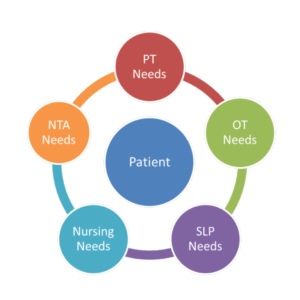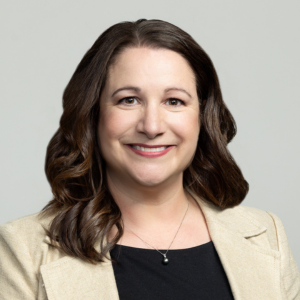Be a Winner in Medicare RUG-53
| BY CHERYL FIELD, MSN, RN, CRRN, AND JIM KAZMER |
| Be a winner in Medicare RUG-53 Still struggling with the new grouper? A refresher course to bring you up to financial speed |
| January 1, 2006, marked the official start date of RUG-53, adding new groups to the Medicare reimbursement Prospective Payment System (PPS) for the first time since its onset in 1998. This enhancement to PPS results in 9 additional groups within the rehabilitation category, totaling 23 groups that pay for rehabilitation services. Once again, MDS assessment inaccuracies will cost providers accurate reimbursement. Winners in RUG-53 will focus on MDS accuracy, especially on specific payment items. What’s Changed in RUG-53? Background To achieve this neutral impact, the Case-Mix Indices (CMIs) were realigned, and reimbursement was redistributed across the upper 35 groups. Thus, the 9 new groups pay more, the next 26 groups pay less, and the bottom 18 groups offer a small increase in payment. |
| Figure 1 illustrates which RUG groups will pay providers more dollars per day, as expressed by a percentage change from the RUG-44 payment rates from FY 2006-Q1. The 9 new groups are a combination of the Rehabilitation and Extensive Services groups. These combination groups generally pay more dollars per day than any Rehab-only or Extensive Services’only groups. This model was designed based on awareness that medically complex residents who also need rehabilitation are more costly for providers. The CMIs assigned to the 9 new groups are generally higher, beginning with 53 and descending. This was done because RUG-44 offered a financial incentive to delay initiation of rehabilitation services in the early days following admission, which encouraged medical needs to be assessed and routines established before the onset of therapy. As a result, a higher SE RUG was often billed for the first 14 days. RUG-53 removes this financial incentive to delay rehab and reimburses higher when complex medical and skilled rehabilitation services are provided jointly from day 1. This change creates reimbursement groups that better meet the needs of all residents being admitted to SNF settings. Assignment into one of the 9 new groups requires that rehabilitation services have been provided, or are planned to be provided, during the five-day assessment. The RUG-53 model does not change any of the rehabilitation-minutes requirements for grouper assignment; i.e., Rehab High still requires 325 minutes and one therapy service provided five times a week. The RUG-53 model defines “medically complex” as those residents whose MDS assessment meets the Extensive Services (SE) criteria. There are five items on the MDS that determine SE group assignment: IV Medications (P1ac), IV Fluids (K5a), Tracheostomy (P1aj), Suctioning (P1ai), or Ventilator/Respirator (P1al). Coding any of these qualifies the assessment for the SE criteria. “Winning” with RUG-53 means reviewing medical documentation during the look-back period for these items and fully understanding their definitions and coding, as presented in the RAI manual. Staff educators should refer to RAI instructions found at www.cms.hhs.gov. For each MDS assessment that meets the criteria for both Rehabilitation and Extensive Services, the ADL index will determine the last letter of the new RUG grouper. Any RUG with an “L” or an “X” as the last letter indicates that the assessment has qualified for one of the 9 new groups. In all cases, the RUG-53 model requires an ADL score greater than 7 to qualify for the 9 new groups. Depending on the group, the ADL score defining Low “L” and High “X” varies (figure 2). |
| Index Maximizing Still Possible As indicated, in RUG-53 the top 9 groups generally have the highest case-mix values. As you move down through the RUG listing, however, the CMI values are not in numerical order. For example, RMX has a higher CMI than many of the “higher” rehabilitation combination groups. Index maximizing means that when an assessment meets Rehab+SE+ADL>7, the software searches all 53 groups. The grouper identifies all RUG categories that the assessment would qualify for and then assigns the group that has the highest CMI. MDS coordinators should therefore expect assessments to be assigned a group with a higher CMI, which pays more, even when the “middle letter” in the group appears to map to a less intense group. In other words, RHA+SE+ADL>14=RMX, not RHX as one might expect. For more explanation and examples of index maximizing, go to www.ltcq.com and read the RUG-53 impact analysis in the newsletter located under “News and Events.” Impact of MDS Accuracy Accuracy can be a problem. In a recent study conducted by LTCQ, 1,087,113 MDS assessments for the 12 months of FY 2005 were analyzed for MDS accuracy. LTCQ found that 62.5% of Medicare MDSs have one or more significant clinical inconsistencies (i.e., relationships between MDS data items that should not occur). Of greater consequence, 52.3% of Medicare MDSs have significant clinical inconsistencies that involve one or more of the 108 MDS items used in the RUG determination. (For further LTCQ findings, see figure 3.) |
| An example of one of the above tests for a significant clinical inconsistency identifies residents with inadequate oral intake and no IV or feeding tube, while being assessed as “not dehydrated.” When this test triggers, it indicates possible undercoding of interventions used for managing poor oral nutritional intake. Resolving this issue requires a review of the adequacy of oral intake, possible interventions missed, and the definition of dehydration. In the same study, when providers made changes to address this inconsistency, 8.2% were resolved by changing Parenteral/IV (K5a) from “not present” to “present” (adding an SE qualifying criterion); 28.3% were resolved by changing Dehydrated (J1c) from “not present” to “present” (a negative impact on a QI but an important clinical condition to monitor); and 63.5% were resolved by changing Insufficient Fluid (J1d) from “present” to “not present” (improved assessment accuracy, and eliminates an unnecessary RAP). More information on LTCQ’s study, “Clinical Inconsistencies That Impact RUG-53,” can be found at www.ltcq.com/RUG53. The 9 new groups only apply to MDS assessments that meet the criteria for the rehabilitation category and the Extensive Services category, as well as having an ADL index greater than 7. To determine inclusion in the 9 new groups, the grouper software looks at three areas of the MDS: (1) section P and T for rehabilitation minutes; (2) Extensive Services qualifiers, i.e., K5 item for Parenteral/IV (K5a), section P1 items for IV Medication (P1ac), Suctioning (P1ai), Tracheostomy care (P1aj), or Ventilator/Respirator (P1al); and (3) section G to determine ADL index. |
| Facility Case Mix: The Foundation for Success Do you have the right mix of residents to be a RUG-53 winner? Knowing what percentage of residents meet the new criteria can help predict a winning outcome. Figure 4 shows the change in revenue (RUG-53 compared with 2005 RUG-44 rates) on the vertical axis using the case mix for more than 1,000 long-term care providers plotted against each provider’s percentage of Medicare assessments in the 9 new groups. The correlation coefficients from these curves are very good. This analysis clearly shows the winners relative to the reimbursement rates from FY 2005 (with “winning” defined as a change in revenue greater than 0 percent, using the exact same case mix). While there are some winners with less than 21.2% (rural) and 23.7% (urban) of their assessments falling into the 9 new RUGs, most winners in both settings have greater than these percentages. (Of course, this definition of winning could be argued as “still losing,” since the rates are relative to 2005 RUG-44 rates and do not include the 3.2% market-basket increase.) Improve Your Chances
As previously noted, RUG-53 was designed as a budget-neutral program, rendering the prior RUG-44 obsolete after January 1, 2006. Despite the one-quarter delay in FY 2006 implementation and the subsequent months since the end of the first quarter, providers have had little time to evaluate the impact of RUG-53 on their operations. Financial winners will review their processes and focus on improvement in: (1) MDS data accuracy, (2) case mix of admissions, (3) selection of ARD and coordination of service delivery with therapy managers, and (4) operational changes that will ensure proper look-back to document each resident’s clinical history. |
| Cheryl Field, MSN, RN, CRRN, is Director of Clinical and Reimbursement Services for LTCQ, Inc., a Web-based information services company that works with long-term care providers to improve their clinical outcomes and risk management while ensuring accurate reimbursement and regulatory compliance. Jim Kazmer is Director of Healthcare Industry Analysis for LTCQ, Inc. For further information, phone (781) 457-5900 or visit www.ltcq.com. To send comments to the authors and editors, e-mail field0606@nursinghomesmagazine.com. |
I Advance Senior Care is the industry-leading source for practical, in-depth, business-building, and resident care information for owners, executives, administrators, and directors of nursing at assisted living communities, skilled nursing facilities, post-acute facilities, and continuing care retirement communities. The I Advance Senior Care editorial team and industry experts provide market analysis, strategic direction, policy commentary, clinical best-practices, business management, and technology breakthroughs.
I Advance Senior Care is part of the Institute for the Advancement of Senior Care and published by Plain-English Health Care.
Related Articles
Topics: Articles , MDS/RAI , Medicare/Medicaid











